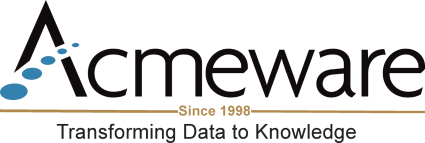As a healthcare professional with many years of nursing experience, I can’t say that there is ever a good time for a hospital’s EHR system to be offline. Whether the system is having routine maintenance or if there is another event that interrupts its access and use, the impact is never a positive one. Every healthcare provider working in the facility during that downtime period will be affected.
From workflows to workloads, the once streamlined and automated processes are immediately interrupted, and a very unfamiliar environment is created. This new environment can be very cumbersome and redundant. Collaboration with care team members becomes fragmented and the organized logic in the medical record, designed for efficiency and patient safety, is immediately reduced and reverted to a paper workflow. From registration and turnaround times to medication administration and discharges, processes across the facility will be delayed, care will be affected and the risks for errors will increase.
Industry leaders understand the impact that system downtime has on a facility and the care it provides. Therefore, efforts are made to limit planned downtimes and when they are inevitable, all measures are employed to minimize the time that the system is down. However, when downtime is unplanned such as with a power failure or a cyber-attack, the element of control is lost. Access to critical information is lost! This is not a question of if it will happen, but when.
Tuesday morning at 0642 CST is the answer to that question. Not unusual but a bit early, there are ambulances en route and a trauma activation issued. The medical floor admitted several patients overnight and they are near capacity. Mrs. C., a 77-year-old patient with diabetes was admitted two days ago due to a serious wound infection. Her blood sugars are uncontrolled, and the wound has purulent drainage. Mr. A., age 80, requires renal dosing adjustments due to chronic renal insufficiency. The parents of a 12-year-old patient in the ER are extremely worried and they are looking for answers to the cause of their daughter’s slurred speech and muscle twitching. Providers are rounding and the change of shift is underway. Out of nowhere, a bolt of lightning strikes! The lights flicker, computer screens go dark and generator power kicks on. Surprise! The EHR system is offline. What's the plan?
Access to the critical information in the EMR is lost and every department within the facility will be affected. Provider orders, test results and allergies are now unknown. Questions about medication administration times and how to reach the emergency contacts are just a couple of examples. The perfect storm to cause errors and the risk for patient injury is now a major concern. Every facility needs a downtime playbook to establish a command center, procedures to follow, and a communication plan. The key is to have a downtime solution, one that provides a contingency plan when the system goes down. To maintain the operations across the healthcare facility and to mitigate patient risk, a downtime solution must provide immediate access to all the necessary information for every patient on every unit. 
Acmeware has seen the operational and financial devastation caused to facilities from a ransomware attack. The possibility of data loss, extended downtime due to lack of access and violation of privacy for patients make the resiliency of EHR systems vitally important to healthcare providers. This year CMS added a new SAFER Guides measure to the Protect Patient Health Information Objective as a Yes/No attestation statement and is a requirement for all Eligible Hospitals, Critical Access Hospitals and provider clinics who participate in the Medicare Promoting Interoperability (PI) program. The SAFER Guide attestation helps organizations to actively prepare for cybersecurity breaches and attacks. The SAFER Guides are designed to help healthcare organizations conduct self-assessments to optimize the safety and safe use of electronic health records (EHRs). Specifically, there is an entire section related to Contingency Planning.
On the brighter side, Acmeware continues to set the standard for healthcare data management and quality reporting and our commitment remains vigilant on developing high quality solutions designed to help hospitals and providers care for patients. To reduce the risk of errors and patient injuries, we offer our solution: Downtime Defender. Downtime Defender is not only a safety net for capturing critical clinical and business information, it also distributes that information to the team members who need it. With a robust set of standard reports and the ability to add custom reports, this solution will ensure that patient care and workflow continuity is maintained.
Our Quality team is always available to help answer any questions you might have regarding the new CMS SAFER Guides Measure. You can preview the functionality of our downtime solution by contacting us and requesting a demonstration.
